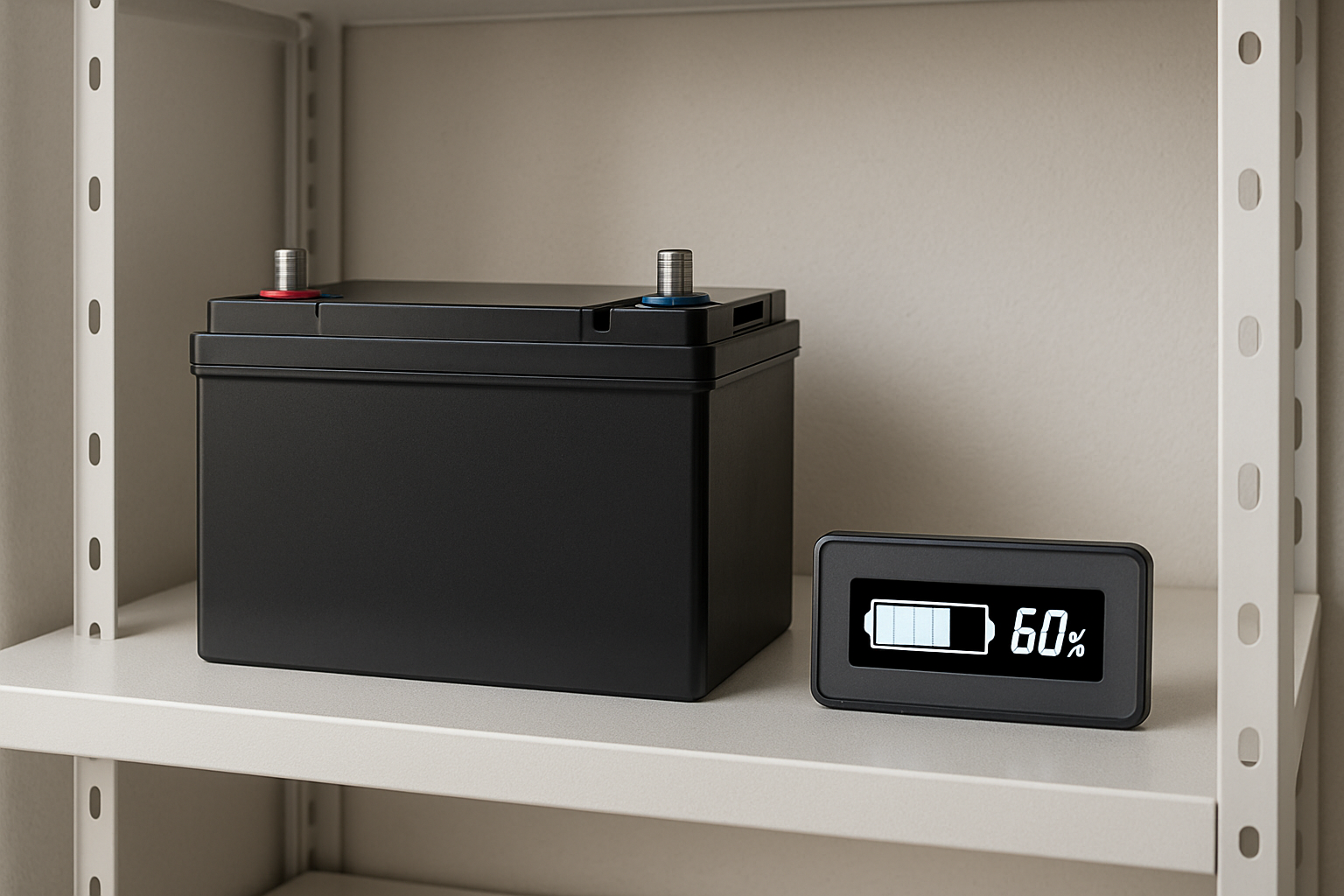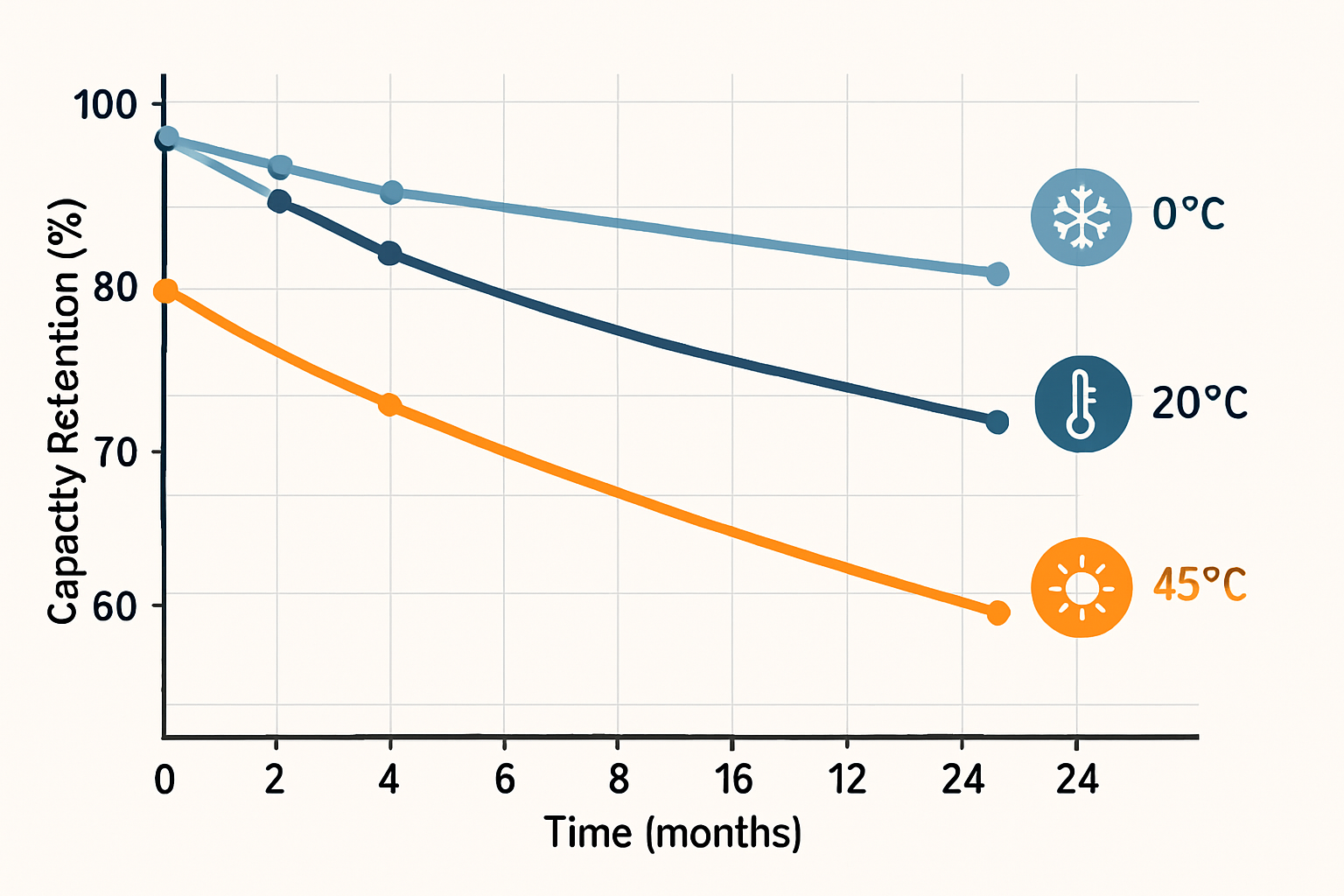Lithium iron phosphate (LiFePO4) batteries are a cornerstone of modern solar energy storage systems. Their reputation for safety, longevity, and performance makes them an excellent choice for achieving energy independence. But to maximize that lifespan, proper care is crucial, especially during periods of inactivity. A central question for many owners is about the ideal state of charge (SOC) for long-term LiFePO4 battery storage. Storing your battery correctly is one of the most effective ways to protect your investment and ensure it's ready when you need it.
Understanding State of Charge and Its Impact on Battery Health
Think of State of Charge, or SOC, as the fuel gauge for your battery. It's expressed as a percentage, where 100% is fully charged and 0% is fully discharged. This metric is more than just a convenience; it's a critical indicator of your battery's health and a key factor in its long-term performance.
What Exactly is SOC?
SOC represents the amount of available energy stored in your battery at any given moment. A Battery Management System (BMS) constantly monitors voltage and current to estimate the SOC. This allows you to know how much energy you can draw from your system and when it needs recharging. For a LiFePO4 battery, this reading is particularly stable across most of its discharge curve, making precise management important.
How SOC Affects LiFePO4 Longevity
The SOC at which a battery is stored directly influences its rate of degradation. Storing a battery at very high or very low charge levels for extended periods puts stress on its internal components. For LiFePO4 chemistry, this stress can lead to a gradual, irreversible loss of capacity. While these batteries are robust, optimizing storage conditions, including SOC, can add years to their operational life.
The Argument for Partial State of Charge Storage
For long-term storage, the consensus points toward a partial SOC as the ideal strategy. Keeping a LiFePO4 battery at a full 100% charge for months is not the best practice for preserving its health. The chemistry is most stable and under the least amount of stress when it is not at its voltage extremes.
The Science of Stability
At a full 100% charge, the materials inside a lithium-ion battery are in a higher-energy, less stable state. This can accelerate degradation processes like electrolyte decomposition and passive layer growth on the electrodes, leading to reduced capacity. A study from the International Renewable Energy Agency (IRENA) supports this, noting that for long-term backup, a lithium-ion battery should be kept partially charged to maintain chemical stability and prevent a drastic decrease in capacity. This insight is detailed in their report, Innovation Outlook: Smart charging for electric vehicles.
The Optimal SOC Range for Storage
For long-term LiFePO4 battery storage (periods longer than a month), the recommended SOC is typically between 40% and 60%. This middle range minimizes stress on the battery's components. The self-discharge rate of LiFePO4 batteries is very low—often just 2-3% per month—so you can store them for many months without significant energy loss.
| Storage SOC | Primary Benefit | Best For |
|---|---|---|
| 100% | Ready for immediate maximum use | Emergency backup systems, short-term (days) |
| 40% - 60% | Maximizes lifespan, minimizes degradation | Long-term storage (months), seasonal use |
| <20% | (Not Recommended) | Risk of over-discharge, potential cell damage |
When Is a Full Charge the Right Choice?
While partial SOC is best for storage, there are situations where maintaining a higher state of charge is necessary. The key is understanding the difference between storage and operational readiness.
Emergency Preparedness
If your energy storage system serves as a critical backup for power outages, you'll want it closer to a full charge. Keeping it between 80% and 90% provides ample energy for an emergency without holding it at the maximum 100% charge level continuously. This offers a good balance between readiness and health preservation.
BMS Calibration and Cell Balancing
Periodically charging your LiFePO4 battery to 100% is a necessary maintenance step. This process allows the Battery Management System (BMS) to perform a crucial function: cell balancing. The BMS ensures all individual cells within the battery pack are at an equal voltage. This calibration helps the BMS provide accurate SOC readings and ensures the pack operates efficiently and safely. A full charge cycle every 1-3 months is often sufficient for this purpose.
A Practical Guide to Storing Your LiFePO4 Battery
Following a few simple steps will ensure your battery remains in top condition during storage. This process protects your hardware and ensures reliable performance when you bring it back into service.
Step 1: Set the Target SOC
Before storage, either charge or discharge your battery until it reaches the 40-60% SOC range. Most advanced solar charge controllers and battery inverters allow you to set charging limits, making this process straightforward.
Step 2: Disconnect from Your System
Physically disconnect the battery from all loads and charging sources. This includes your solar inverter, charge controller, and any DC appliances. This prevents small 'phantom' loads from slowly draining the battery over time, which could push it into a damaging low-voltage state.
Step 3: Ensure a Proper Environment
Store the battery in a cool, dry location. The ideal temperature range is typically between 5°C and 25°C (41°F and 77°F). Avoid areas with extreme temperature fluctuations or high humidity. A stable environment is less stressful for the battery's components.
Step 4: Perform Periodic Checks
Even with a low self-discharge rate, it's wise to check the battery's voltage or SOC every 3-6 months. If the charge has dropped significantly, you can perform a brief charging cycle to bring it back into the optimal 40-60% range before returning it to storage. This simple check-up prevents the battery from ever falling into a critically low state.
Maximizing Your Energy Investment
A LiFePO4 battery is a significant part of any residential or off-grid solar installation. Implementing a smart LiFePO4 charging strategy for storage is not just about maintenance; it's about maximizing the value and lifespan of your energy storage solution. By understanding the role of SOC, you can ensure your system delivers reliable power for years to come. Proper battery care is a fundamental aspect of achieving high solar storage performance and securing your energy independence. As the International Energy Agency (IEA) highlights, the growth of battery storage is rapid, making efficient operation and longevity more important than ever for a sustainable energy future, a point made in their analysis on the Role of Critical Minerals in Clean Energy Transitions.
Frequently Asked Questions
What is the best SOC to store a LiFePO4 battery?
The ideal State of Charge (SOC) for long-term storage of a LiFePO4 battery is between 40% and 60%. This range minimizes stress on the battery cells, slowing down degradation and extending its overall lifespan.
How long can a LiFePO4 battery be stored?
Thanks to their very low self-discharge rate (2-3% per month), LiFePO4 batteries can be stored for long periods. When stored at the correct SOC and in a proper environment, they can be left for over a year. It is recommended to check the SOC every 3-6 months.
Should I fully charge a LiFePO4 battery before storing it?
No, you should avoid storing a LiFePO4 battery at a 100% full charge for extended periods. A full charge places the battery in a higher-stress state, which can accelerate capacity loss over time. Aim for a partial charge instead.
What happens if I store my LiFePO4 battery fully charged?
Storing a LiFePO4 battery at 100% SOC for many months can lead to accelerated calendar aging. This results in a faster-than-normal decline in total capacity, meaning the battery will hold less energy over its life than one stored at a partial SOC.





Leave a comment
All comments are moderated before being published.
This site is protected by hCaptcha and the hCaptcha Privacy Policy and Terms of Service apply.